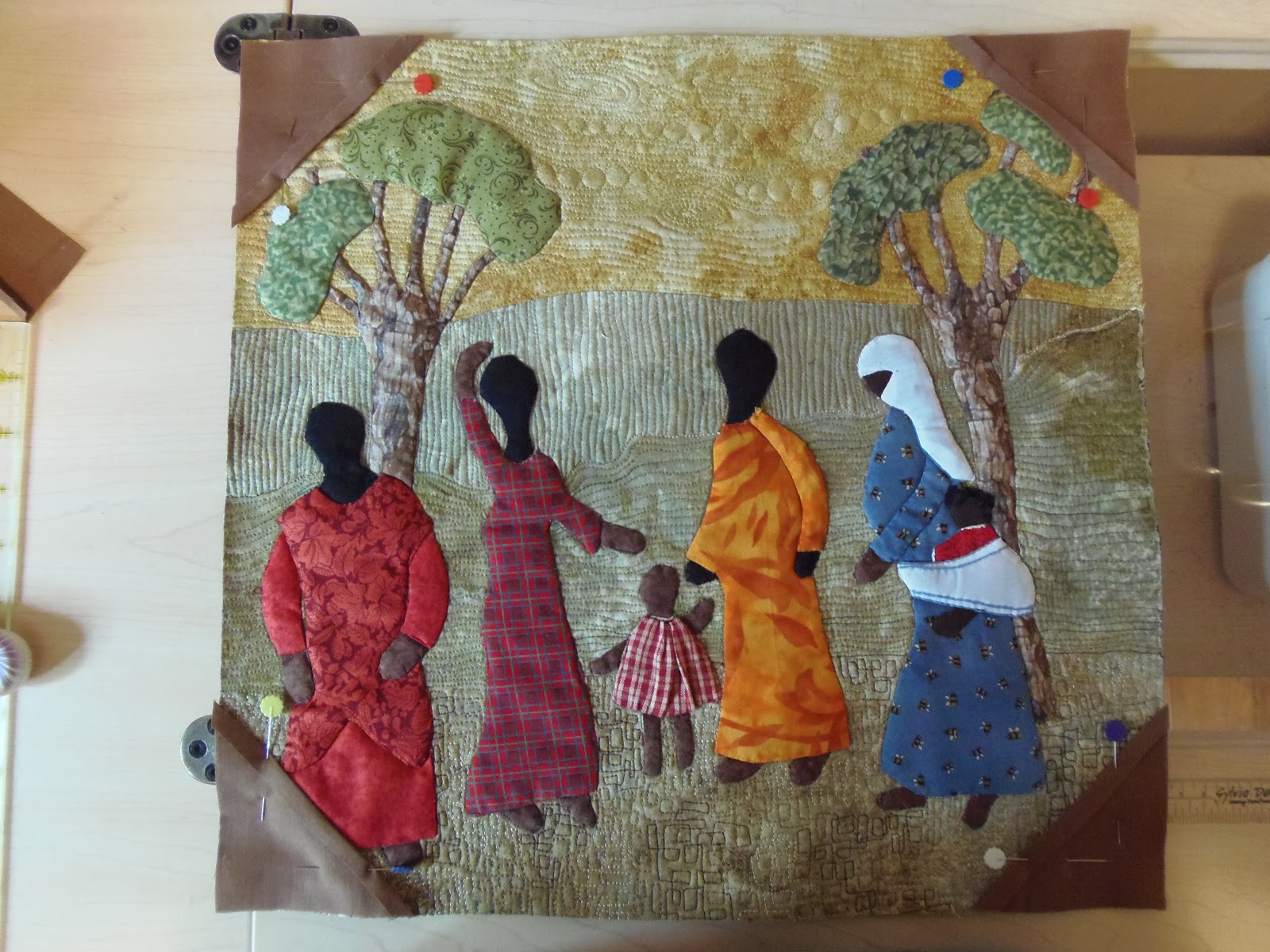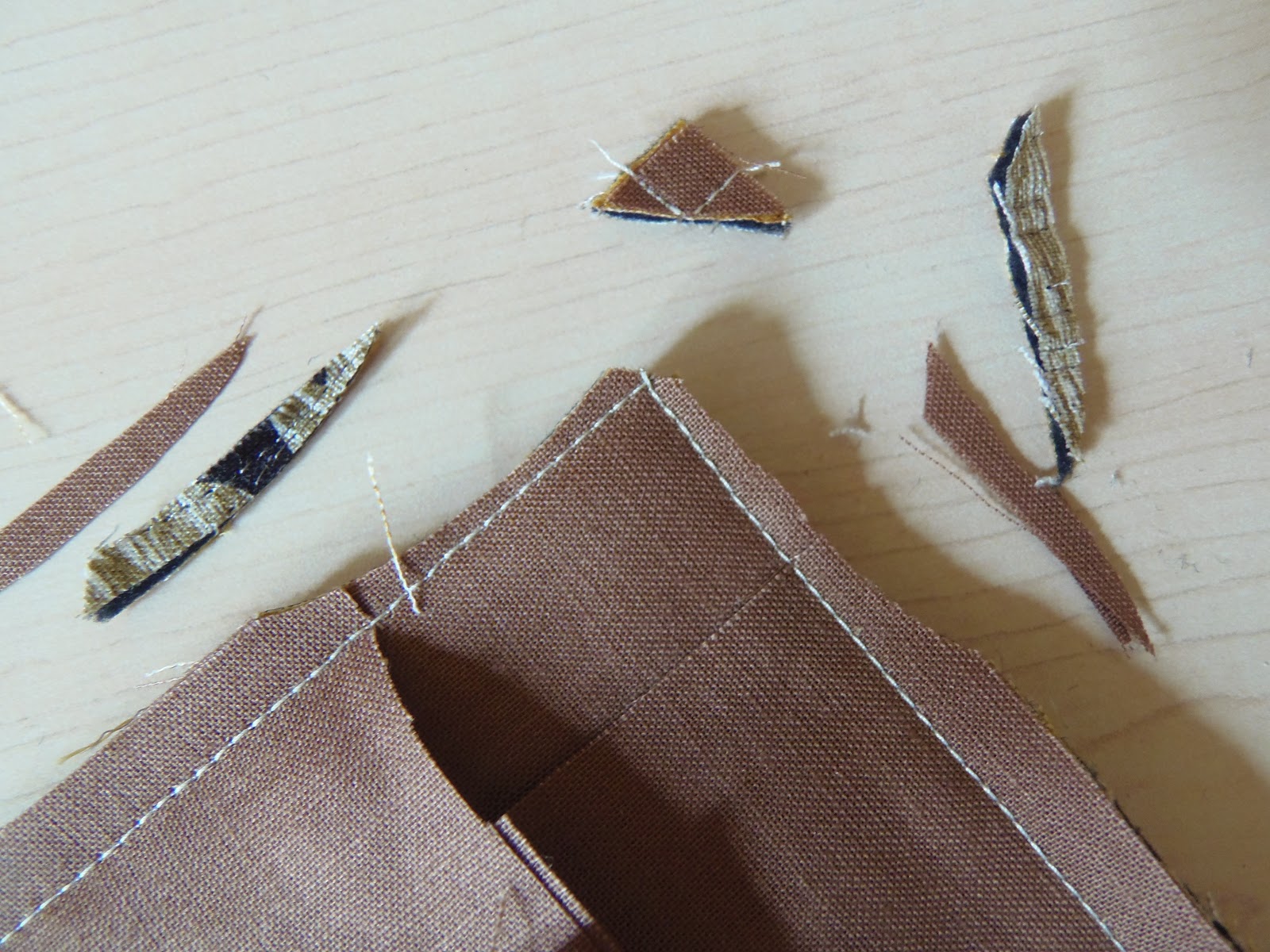Facing a quilt is a way of finishing the edges without having a binding show on the front. Why would you want to do this? It is a nice method of finishing a small quilt that might be overwhelmed by a traditional binding. Modern quilts are often finished with a facing to give that "clean" look. When a facing is used no binding will show on the front. Think about a blouse with a round neck and no collar…it is often finished with a facing that is turned to the inside leaving a nice clean neckline. The same technique can be used to finish a quilt.
Binding on left and facing on right
If you used a fabric that isn’t busy, you can use the same
fabric for the facings and they will just disappear. Personally I prefer to use
a different fabric so that the back of the quilt appears to be framed. The
choice is yours. In the example below, I had a busy fat quarter that I didn't want to chop up so I used it as a backing. There was no way of facing the quilt with the same print (or at least it would involve too much work for me) so instead I faced the quilt with a complementary fabric!
Cut the two 4” squares in half on the diagonal. Turn under
the diagonal edge ¼” and press well. I use spray starch so there is a nice,
crisp fold that will hold.
These half squares may not be square. Lay them out on your cutting matt and if necessary trim them so that they are square. For quilts that aren’t square you will trim the corners AFTER they are pinned to the quilt. You can see this one needs trimming!
Turn under the edges of the 2” strips by ¼” again using spray starch.
Pin the half square triangles on corners of the wall hanging with the
right sides together.
Pin a strip the width of the wall hanging to the quilt with
right sides together. If the strip is too long trim it to fit. It should be
about 1” or so in from either edge.
Repeat with the remaining strips.
Clip the corners close to the stitching without cutting the stitching.
And while I was attaching the facing, I was using my nine patches on flannels method of using scraps and saving thread so at the end I had another nine patch for the stash!
I find that this technique works really well on wonky edges. All four sides of my wall hanging “Jack” have curved edges. There are so many curves in the piece itself that I felt that if I squared the quilt up it wouldn’t work so I just trimmed up the curved edges so that they were gentle curves with clean edges.
The one thing that I did that was slightly different is this; I made
the corner triangles and pinned them to the quilt with right sides together. I
then turned the quilt over so that the back was facing up and I trimmed the
triangles so that they were even with the quilt. I then stitched down the
triangles before attaching the facings on the top, bottom and sides. I
proceeded as above. It worked perfectly!
Until I post again, happy sewing!


















No comments:
Post a Comment